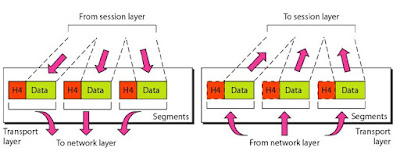VPN (Virtual Private Network)
→ What is VPN?
→ What is VPN?
↪ A VPN (Virtual private network) is a secure connection
between two or more endpoints. It can also be seen as an extension to a private
network. VPN data is encrypted from one VPN gateway to the other,
providing a secure link between two sites over the internet.
Remote Access VPN : - In a remote access VPN scenario which is also known as
mobile VPN a secure connection would be made from an individual computer to a
VPN gateway. This would enable a user to access their e-mail, files and other
resources at work from where ever they may be, providing they have an internet
connection.
VPN Networking Protocols
⇨ PPTP (Point-to-Point tunneling Protocols) : - PPTP is a protocol or technology that supports the use of
VPN’s. Using PPTP, remote users can access their corporate networks securely
using the Microsoft Windows Platforms and other PPP (Point to Point tunneling
Protocols) enabled systems. This is achieved with remote users dialing into
their local internet security providers to connect securely to their networks
via the internet.
⇨ L2TP (Layer 2 tunneling Protocols) : - L2TP is an extension of the PPTP (Point to point tunneling
protocol), used by internet service providers to provide VPN services over the
internet. L2TP combines the functionality of PPTP and L2F (Layer 2 forwarding
protocol) with some additional functions using some of the IPSec functionality.
Also L2TP can be used in conjunction with IPSec to provide encryption,
authentication and integrity.
⇨ IPSec (IP Security) : - IPSec operates on layer 3 and so can protect any protocol
that runs on top of IP. IPSec is a framework consisting of various protocols
and algorithms which can be added to and developed. IPSec provides flexibility
and strength in depth, and is an almost perfect solution for securing VPN’s.
The only drawback is IPSec requires setting up on the corporate network and on
the client end and is a complex framework to work with.
⇨ SSL (Secure Socket Layer) : - SSL VPN provides excellent security for remote access users
as well as ease of use. SSL is already heavily used such as when you shop
online, accessing your bank account online, you will notice an SSL protected
page when you see the “https” in your browser URL bar as opposed to “http”.


















